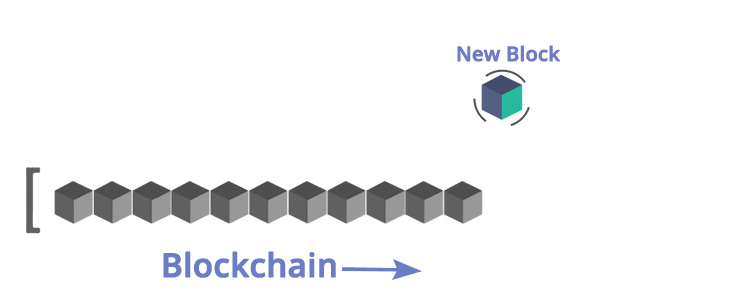Blockchain 101: From Whiteboard Theory to Real-Life Applications

One of the most important lessons I’ve learned while investing in cryptocurrency assets is the importance of understanding how this technology works and how it can be leveraged. It makes little sense to simply follow the herd when there are great online tools and learning courses available; some key questions I’ll try to address are how blockchain can be used in real life, how can projects successfully mature this technology, and why blockchain matters as a new system for trust.
But first things first: how can we define what is and what isn’t a blockchain?
I’ll borrow some knowledge from the awesome Bitcoin Developer Jimmy Song, who in my view explains these differences brilliantly .
“The main thing distinguishing a blockchain from a normal database is that there are specific rules about how to put data into the database. That is, it cannot conflict with some other data that’s already in the database (consistent), it’s append-only (immutable), and the data itself is locked to an owner (ownable), it’s replicable and available. Finally, everyone agrees on what the states of things in the database are (canonical) without a central party (decentralized).”
Now that the cat is out of the bag, and there is a clear distinction between standard databases and blockchain ledgers, I’ll base my explanatory arguments in the Linux’ foundation course Blockchain: Understanding Its Uses and Implications . For a more in-depth analysis, please complete the curriculum, as it’s free of charge and really helps developing solid knowledge on public blockchains and private ledgers.
–This article shouldn’t be taken as financial advisement as it represents my personal opinion and views. I have savings invested in cryptocurrency so take whatever I write with a grain of salt. Do not invest what you cannot afford to lose and always read as much as possible about a project before investing. Never forget: with great power, comes great responsibility. Being your own bank means you’re always responsible for your own money—
Why Does the Blockchain Matter?

The very first question we ought to ask ourselves is: how can this technology help humanity? For any new technology to have a long-term impact in the global economy, it must bring some sort of advantage or value over traditional tech.
We start with Bitcoin, by far the most successful implementation on top of the blockchain, which will always be required to make sure it remains decentralized. However, if we consider a mixture of public and private ledgers accessing information via interoperable systems, we could imagine different levels of trust being created between participating agents. That is, we could have a public blockchain serving as an immutable record for some type of businesses transactions, such as tax payments, loans, and settlements, while a private ledger keeps some of the data private, within the organization’s nodes, only accessible by authorized agents (like company employees). Examples of such data could be:
- Medical Records (private)
- Property Agreements (public/private)
- Voting (public).
The core reason why blockchain matters, in the end, is to increase trust between parties through decentralized systems. Blockchain can help humanity by creating more transparent ecosystems, easily auditable by anyone, where the standard rules apply to everyone equally.
Blockchain Components
The blockchain is built of several different types of components, each with a specific role to play within the ledger’s operation. Let’s look at each individually:
- Ledger: A distributed, immutable historical record, as the goal of the blockchain is to create a distributed, immutable record of history.
- Peer Network: Stores, updates, and maintains the ledger. The ledger is stored, updated, and maintained by a peer network as each node in this network maintains its own copy of the ledger. It is the job of the network to come to a consensus on the contents of each update to the ledger. This ensures that each individual copy of the ledger is identical without requiring a centralized “official” copy of the ledger.
- Membership Services: User authentication, authorization, and identity management. On some blockchains, anyone can join the network, and all members have equal powers and authority. Permissioned ledgers require authorization to join, and Membership Services authenticates, authorizes, and manages the identity of users on the private ledger.
- Smart Contract: Program that runs on the blockchain. The original blockchains (such as Bitcoin, Litecoin, or Dogecoin) were designed to simply allow financial transactions to be performed and stored in the historical ledger and had limited configurability. These limitations were put in place on purpose to restrict complicated code from being created — hence Bitcoin not being Turing-complete . Since then, blockchains have evolved, and some have become fully functional distributed computers (Ethereum, Stellar, SingularityNET ). Smart contracts are programs that run on the blockchain. Users can interact with smart contracts in a similar way that they interact with programs on a standard computer.
- Wallet: Stores users’ credentials. In blockchain, the user’s wallet stores their credentials and tracks digital assets associated with the user’s address. The wallet tracks user credentials and any other information that may be associated with their account.
- Events: Notifications of updates and actions on the blockchain. The ledger and the state of the peer network are updated by events. Examples of events include the creation and dispersion of a new transaction across the peer network and the addition of a new block to the blockchain. Events may also include notifications from smart contracts on ledgers that support such functionality.
- Systems Management: Component creation, modification, and monitoring. The blockchain is designed to be a long-lived system in a field that is constantly evolving. Systems management provides the capability of creating, modifying, and monitoring blockchain components to meet the needs of its users.
- Systems Integration: Integration of blockchain with external systems. As blockchain has evolved and increased in functionality, it has become more common to integrate it with other external systems, commonly through the use of smart contracts. While this is not a specific component of the blockchain, systems integration is included to acknowledge this capability. Some examples can be ERP systems integration (Unibright , SAP’s Leonardo , Linux’s Hyperledger ).
Blockchain Data Structure

Data and governance structures are most commonly distributed and decentralized; nonetheless, it’s important to distinguish between the two major dimensions that compose blockchain data, as they are usually associated with scalability and performance.
Data Storage is represented by traditional databases for storing data off-chain. The blockchain provides distributed, immutable storage with built-in integrity checking, but, it has a maximum capacity based on the standard block size and block rate. To provide integrity verification for large amounts of data, it is common to store the data off-chain and store a hash of the data on-chain. This guarantees that the data is not being modified while protecting the blockchain from becoming bloated.
Data Processing is represented by an external system used for additional processing. Smart contracts execute on the blockchain, meaning that each member of the peer network must execute the code to remain in sync with the current state of the network. If smart contracts commonly require large amounts of processing power to complete, devices external to the network may be used to augment the processing power of the network.
To understand how data is written into the blockchain, one must be familiar with public-private key cryptography , based in Elliptic Curve math functions . This crypto-framework allows for agents to write data into a blockchain, as well as proving they’re the owners of said public data, without giving away access to the private keys.
Blockchain Agents

There are different types of agents, and each has a unique function in either blockchain development, implementation, or support. As most expect blockchain technology will be integrated with business operations, a wide array of expertise is needed, to properly and successfully maintain a decentralized ledger.
- Architect: The blockchain architect is the person or group who designs the blockchain structure.
- Operator (administrator): The blockchain operator stores, maintains, and updates the blockchain ledger. Once the blockchain solution is designed and built, an operator can join to create the peer network mentioned previously. The role of the operator is to set up and maintain peers within the network.
- Developer: The blockchain developer creates smart contracts. The functionality has been greatly expanded by the introduction of blockchains that support smart contracts. Developers design and upload smart contracts to the blockchain to expand its capabilities. In addition to implementing the smart contracts, you may also have front-end developers who implement applications that access the blockchain (i.e., the applications initiate the transactions on the blockchain).
- Trustee: The blockchain trustee or regulator is an essential part of the blockchain ecosystem, as many businesses operate under regulations regarding how their data should be stored and processed. For blockchain solutions, a regulator may have greater visibility into the historical ledger due to their role within the organization.
- User: The end user is the consumer of services built around the blockchain. Typically, this involves using software that uses the blockchain as a backend storage solution. Users rarely interact directly with the blockchain.
Blockchain in B2B

The reason why blockchain can potentially become one of the key core business technologies in the next couple of years is due to the fact it’s the very first triple-entry bookkeeping system to be deployed on a global scale.
Triple-entry accounting is an enhancement to the traditional double-entry system, in which all accounting entries involving outside parties are cryptographically sealed by a third entry. Debits, credits, and an immutable link to all past debits and credits.
A seller books a debit to account for cash received, while a buyer books a credit for cash spent in the same transaction, but in separate sets of accounting records. This is where the blockchain comes in: rather than these entries occurring separately in independent sets of books, they occur in the form of a transfer between wallet addresses in the same distributed, public ledger, which creates an interlocking system of enduring accounting records. Since the entries are distributed and cryptographically sealed, falsifying them in a credible way or destroying them to conceal activity is practically impossible.
Triple-Entry Accounting Features:
- Tamper-Proof Records
- Distributed Ledgers
- Double-Entry+Cryptography
- Validated, Secure, and Private
- Digitally Signed Receipts.
Conclusion
While the social hype remains focused on cryptocurrency prices, the technological hype is based on the premise of decentralization, as through the deployment of both public blockchains and private ledgers, it will be possible to increase transparency and security for all users.
New types of decentralized organizations will empower members to use tokens to vote on governance, to store data, and share resources while being rewarded for participating in the network at the same time.
If you ask me, the future does look bright.
Hope you enjoyed the article and learned something new.
Share your comments and thoughts down below!
Disclaimer: The views expressed in the article are solely those of the author and do not represent those of, nor should they be attributed to, CCN.com.
Featured Image from Shutterstock
